The life of a ski and snowboard photographer at the Olympic Games
Ezra Shaw's job is to point and shoot, which is easier said than done. The Getty Images photographer skis the course himself ahead of races at the Winter Olympics, scouting for a mountainside perch on his surgically repaired knees. When Shaw decides where to stand, he sets down the tools of the trade that he lugged from San Francisco.
"I have a spare room in my house," Shaw said recently. "It's turned into a giant closet right now. Cameras all over the bed. Ski gear all over the floor."
Shaw has taken photos for Getty Images, the international visual media company, since 1998. He's covered the Tour de France, soccer's World Cup, and every major North American sports final, plus Indonesian bull races and wrestling matches in an Amazon village. In the winter, he hangs on the periphery of ski and snowboard championships, braving the windchill to snap action shots that get published worldwide.
He's in China this month for the Olympics, assigned to shoot a range of freestyle events, from moguls to slopestyle, at his 12th career Games. Including Shaw, 27 Getty photographers are on the ground at Beijing 2022. Millions of fans will relive gold-medal moments as seen through their lenses.
Before his transpacific flight left, Shaw spoke to theScore about photographing mountain sports, broke down his favorite big air and Alpine shots, and reminisced about his best day on an Olympic slope. The conversation has been edited for length and clarity.

theScore: At the Olympics, the athletes are there to compete and try to perform at their best. How would you sum up what you're there to do?
Shaw: The Olympics for the photographers is very similar. You want to do the best you can. You want to make sure you capture all the big moments - anybody breaking world records, for sure. The one thing Getty Images also encourages their photographers to do is go out and try different angles. Nobody wants to miss an important picture, but it's also nice to get a different viewpoint.
As I was looking through a lot of (my) winter sports pictures, I noticed there were a lot of little skiers in big environments. That's not always what I shoot, but perhaps that's what I like the most when I'm looking at it as a final edit.
I take a lot of pictures where it's straight action: guy coming around a gate. But what's nice at the Olympics, compared to certain events, is we have multiple photographers at these venues. Some days, you might be at this primo position. You know your responsibility is to get everybody coming around a gate - the hard-action picture. The next day, somebody else might be in that position, and you have the chance to try to make a pretty picture.

You've photographed all types of ski and snowboard events: jumping, big air competitions, downhill racing. What's the key to getting a great winter action photo?
A lot of it is backgrounds. That one picture of Gus (Kenworthy, shown atop this story) at the slopestyle at the Olympics in Sochi (in 2014) has the Olympic rings. If that were at a World Cup or Grand Prix event, that would be a Visa sign. Not to knock Visa, because I'm sure they're a very important client of ours. But your eye would go to, say, a yellow Pacifico sign or a Toyota sign. It's nicer at the Olympics. There's a lot less signage.
Especially with downhill skiing, there are certain gates that produce better action than other gates. At some, (the skier is) just cruising along. Others, they have to make a sharp turn. The snow is spraying up in the sky.
With Alpine, there are so many safety nets and course workers everywhere. You might think you're in this perfect spot, and then five minutes before the race, 10 coaches stand behind where you are and completely ruin it.
I think (downhill is) the hardest sport to photograph. You're skiing down the Olympic downhill course with 35-40 pounds of camera gear on your back. You're looking for what you think is going to be the best location to get all those different variables - the action, the clean background, the nice light. You have to be in your position an hour and a half before the race starts because an official checks to make sure you're in a safe spot. Then you stand there.
In Korea (in 2018), it was ridiculously cold. We left our hotel at 5:15 in the morning. We drove an hour and a half to the ski mountain. We're on the mountain by 7, in position by 9 (after) you ski the course a couple of times, and then you wait there until the race starts at about 11. You're on the mountain until the race is over at 2. It's a long day. A lot of work goes into it. I really appreciate (that) when you see these great action pictures.
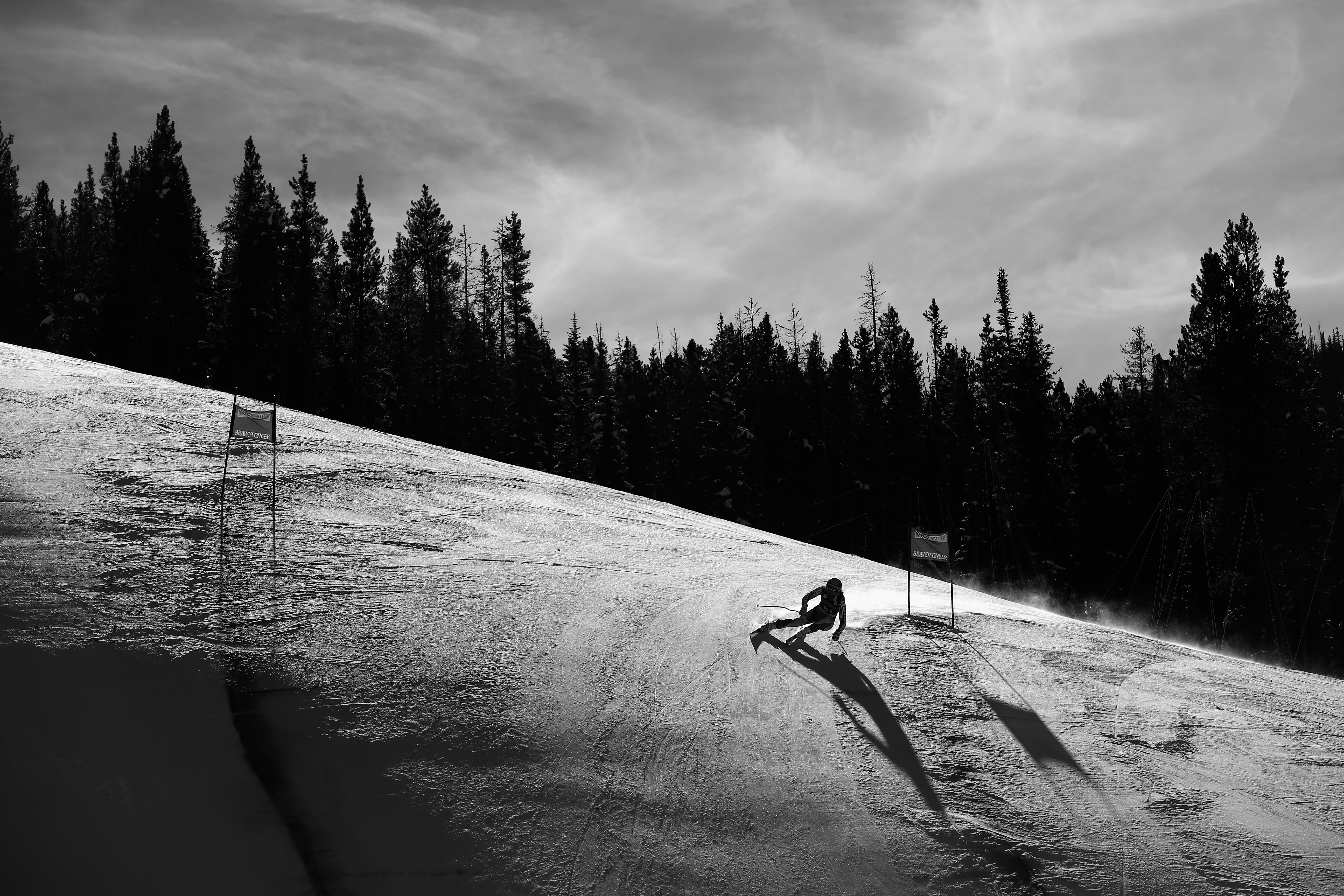
People know how Olympians get ready to compete: they train, they go to other international events. What does your Olympic preparation look like?
It's great when you can photograph these sports beforehand. I got a chance to do the aerials and moguls last week. I did some halfpipe and slopestyle events (in December). Not only do you get to figure out which athletes are bigger, (but) you get your ski legs on a little bit and get ready for the season. I found out one of the lenses I planned to bring to the Olympics isn't working, so Canon's sending me a new one.
I do also try to train. Not like an Olympian, but I do lots of squats and lunges (to be able to carry) the extra weight on your back. I blew out one of my knees in Sochi. Maybe it was bad equipment, or I was younger and didn't think I needed to train as much.
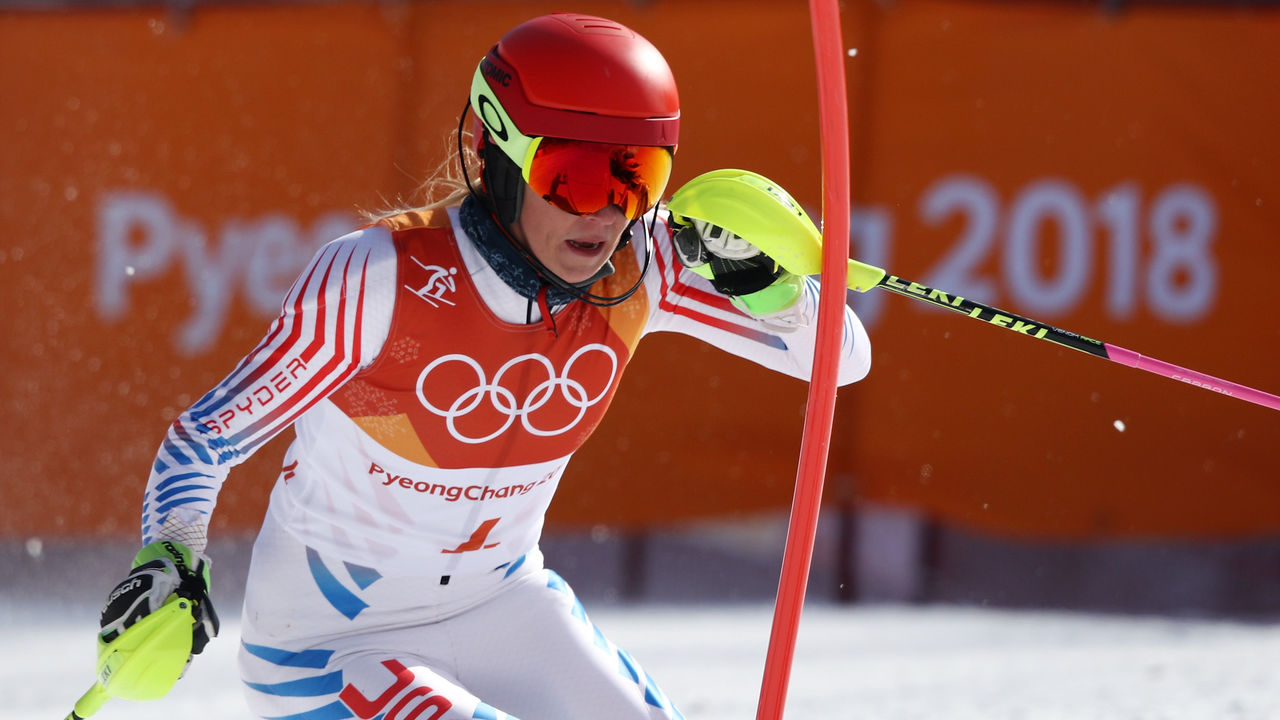
Snowy mountain courses look cool in photos, but I wonder: What challenges do the conditions pose, and how do you deal with them?
Like I was saying, you have to be in position an hour and a half beforehand, but then they can delay the race if there's fog or too much wind. You're on the side of the mountain, and you just wait it out. I have a lot of layers that I bring. But how many layers can you wear?
The tough thing is shooting. You need to be pretty nimble on your fingers. I usually ski with real ski gloves down to the position and then switch into some liners when I find my spot, and I have hand warmers going as well. They had these super-duper hand warmers in Korea. They probably wouldn't be allowed in North America. They produce so much heat, it was amazing. Perhaps they'll have those again in Beijing.
The best-case scenario is when (organizers) know there's going to be tons of snow overnight, and they're not going to be able to clear the course in time for the next day. They have to cancel the race, but they cancel the night before. Then you have a snow day and (the photographers) get to go skiing on fresh powder. It doesn't happen very often, but when it does, it's nice.

That sounds awesome. On the flip side, how do you pass the time when you're waiting on the side of the mountain?
Nowadays, everybody's on their phone, but you can't be on your phone, because your hands are too cold.
A lot of times, there are other photographers around. You end up, especially with the Alpine, in the same spots as at least one or two other people. You share your thermos of tea. I guess not with COVID-19. But snacks, and you just chat. A lot of the ski photographers are European. They're great guys who I've met over the years. People you only see every two or four years. It's fun to catch up.
You do some jumping jacks. Swing your arms or legs back and forth, trying to keep your toes warm.
Let's run through some of your favorite winter sports photos. You mentioned the shot of Kenworthy with the Olympic rings. You took this shot of a ski jumper soaring at the same Olympics. What do you do to convey the gigantic heights these athletes reach?
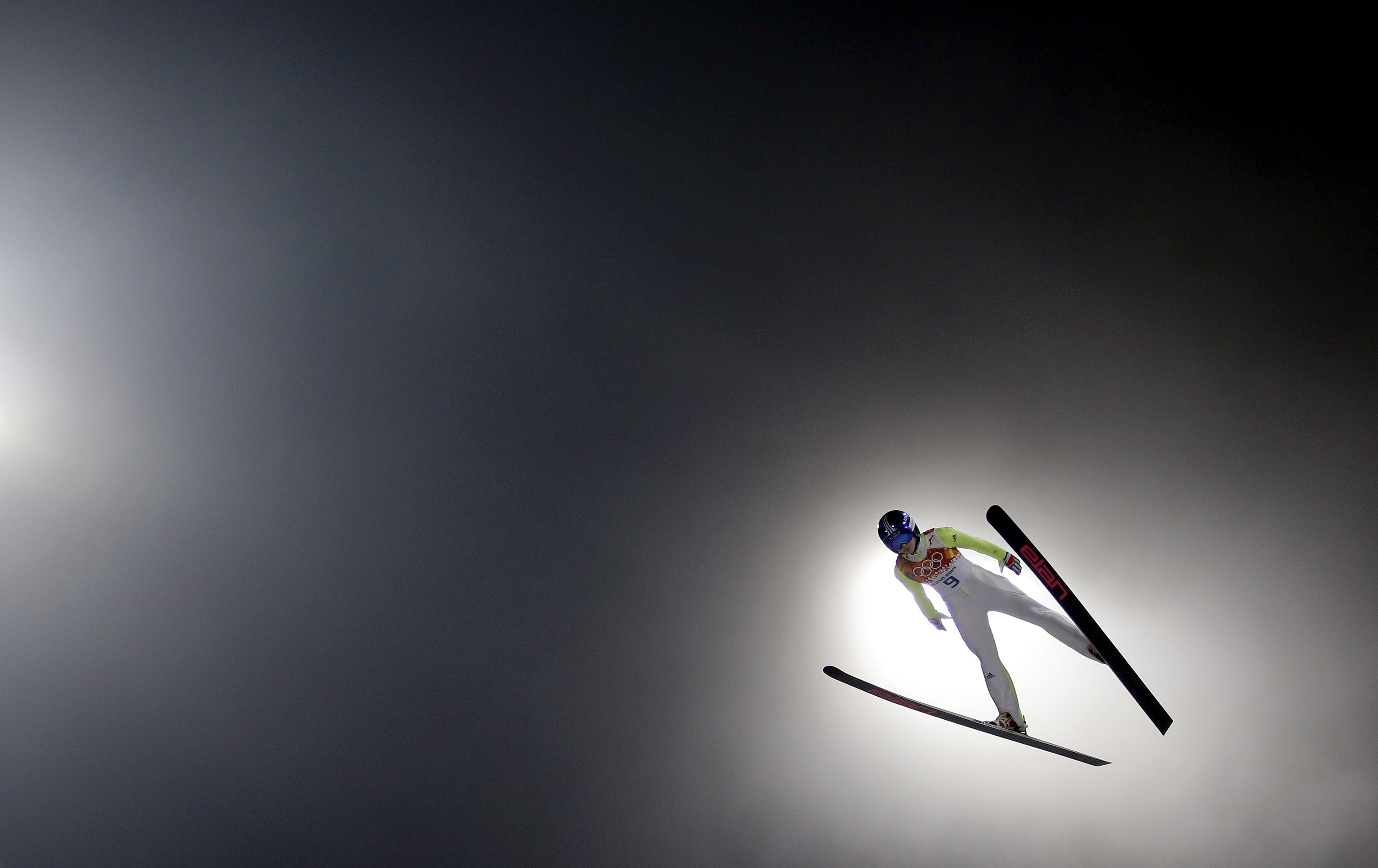
That's always a difficult thing. You always want to show how big their jump is and how much air they're getting. But we also have needs for editorial and commercial clients who want to see tight action, where they can see what type of skis they're wearing or snowboard they're using.
That picture of Gus wouldn't be nearly as good if it were a white sky or an overcast day. It's taking advantage of the conditions. That ski jumping (event) was at night, but the fog was so thick. If the fog weren't there, it would just be these floodlights that completely distract from the skier in the picture.
Other times, you shoot warmups, and you shoot qualifying. That's what I like about slopestyle or aerials. You can mix it up a little bit more than the Alpine events, where you're locked into one position for the entire day.
What's the story behind this photo?

One of those variables that I didn't mention before is luck. It was a very overcast day, but then the sun broke through. That made (the lighting) a little more dramatic, with the mountain range in the background.
A lot of these events, you have to get lucky with the light, but also lucky in the location. I've shot big air contests where there are no mountains in the background, and there is no scenery. It makes it much more difficult to find interesting pictures. This was the position to get a nice shot with the sun peeking out through the clouds and a little bit of luck that he lost his ski in mid-air.
In this photo, a skier's going downhill, and you captured the moment they appeared between trees. How did you think to position yourself in that spot and aim for that framing?
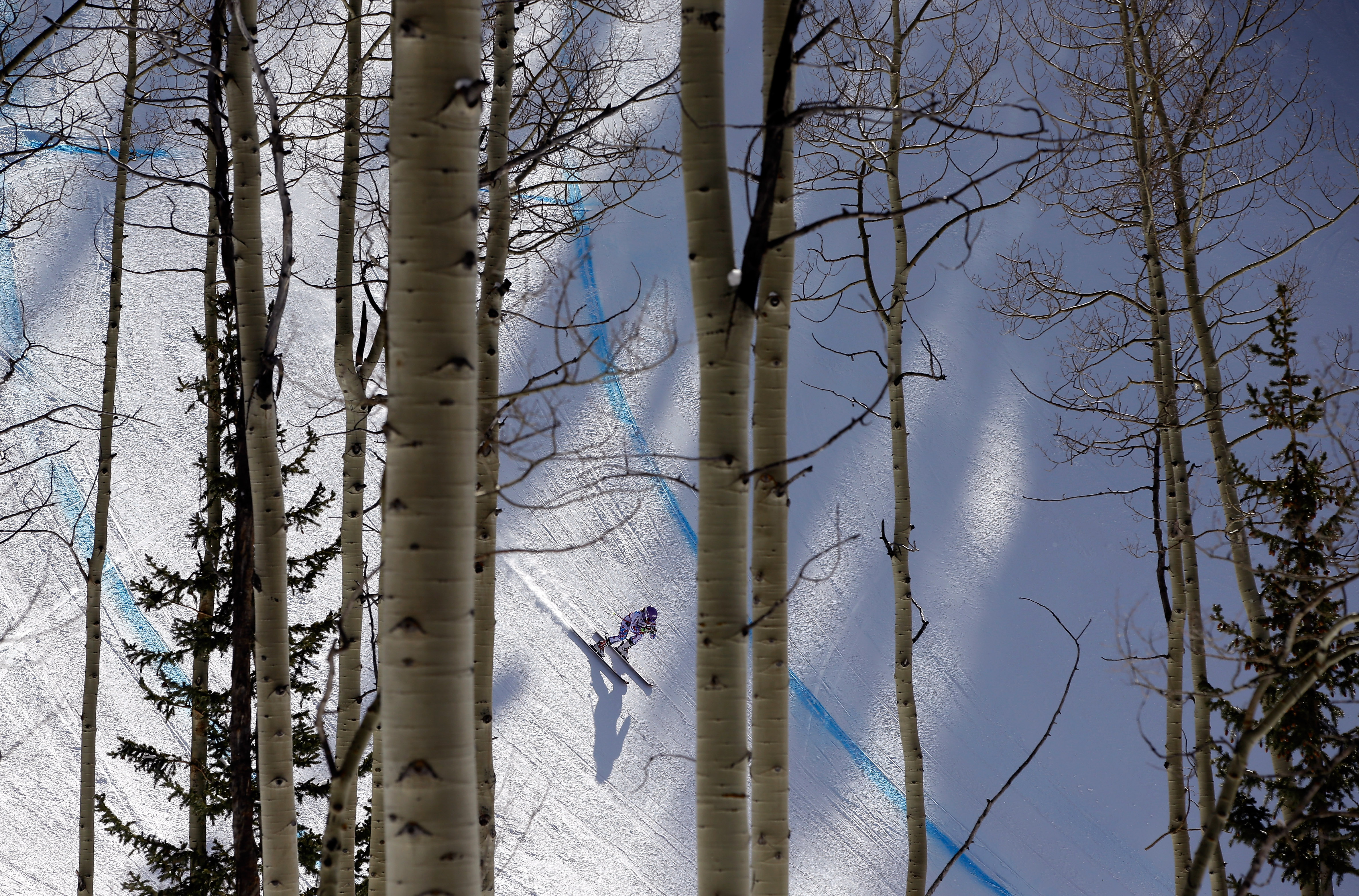
Normally they have a race in Colorado every year, the downhill, that's right after Thanksgiving. Very little snow is on the mountain, at least lately. This event was at the end of February (instead), so there was a ton of snow already on the mountain. You could ski other runs and see the racecourse (from different perspectives).
At that event, we had three other photographers there. I knew there would be somebody at the finish line and two people on the course getting the hard-action pictures. That gave me the chance to try that. I only got a few skiers in the right location. They take different lines. Some are too far down. I didn't quite get them framed right. It was nice to have the chance to mix it up that one day.
I want to ask about these shots of Chloe Kim and Mikaela Shiffrin, two American star Olympians. You photographed them with their helmets off. Why is it important to get that sort of photo?
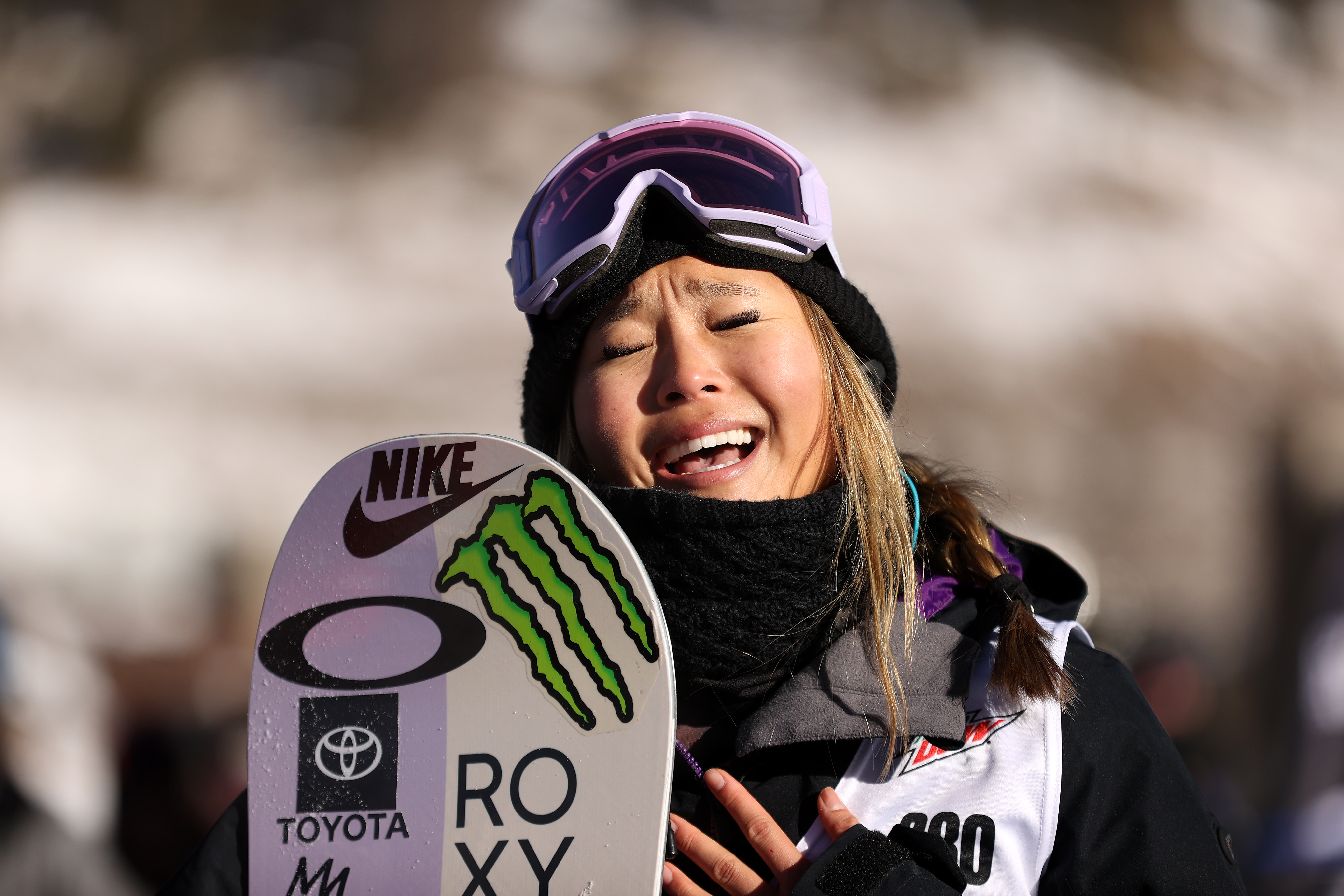
At the finish line or the podium, a lot of times you get more emotion.
Chloe Kim, I was really surprised that she was that emotional. With halfpipe, you get three runs in the finals, and it's only the best run that counts. She had fallen the first two, and she was the last competitor to go. This was her first event of the year. She came down and landed this great run. This was her reaction. She hadn't even gotten her score yet. She was ecstatic that she had landed the run that she wanted.
When they're going so fast, they have no time to show emotion. It's not like Steph Curry during a basketball game, where he's jumping around all the time. They're so concentrated during a run.
Shiffrin at PyeongChang, it was great to see her happy and joking around even though she didn't win the gold medal (in the women's combined). She's such a superstar, but some superstars are disappointed that they don't win the gold. On the podium at the Olympics, you should be ecstatic no matter what.
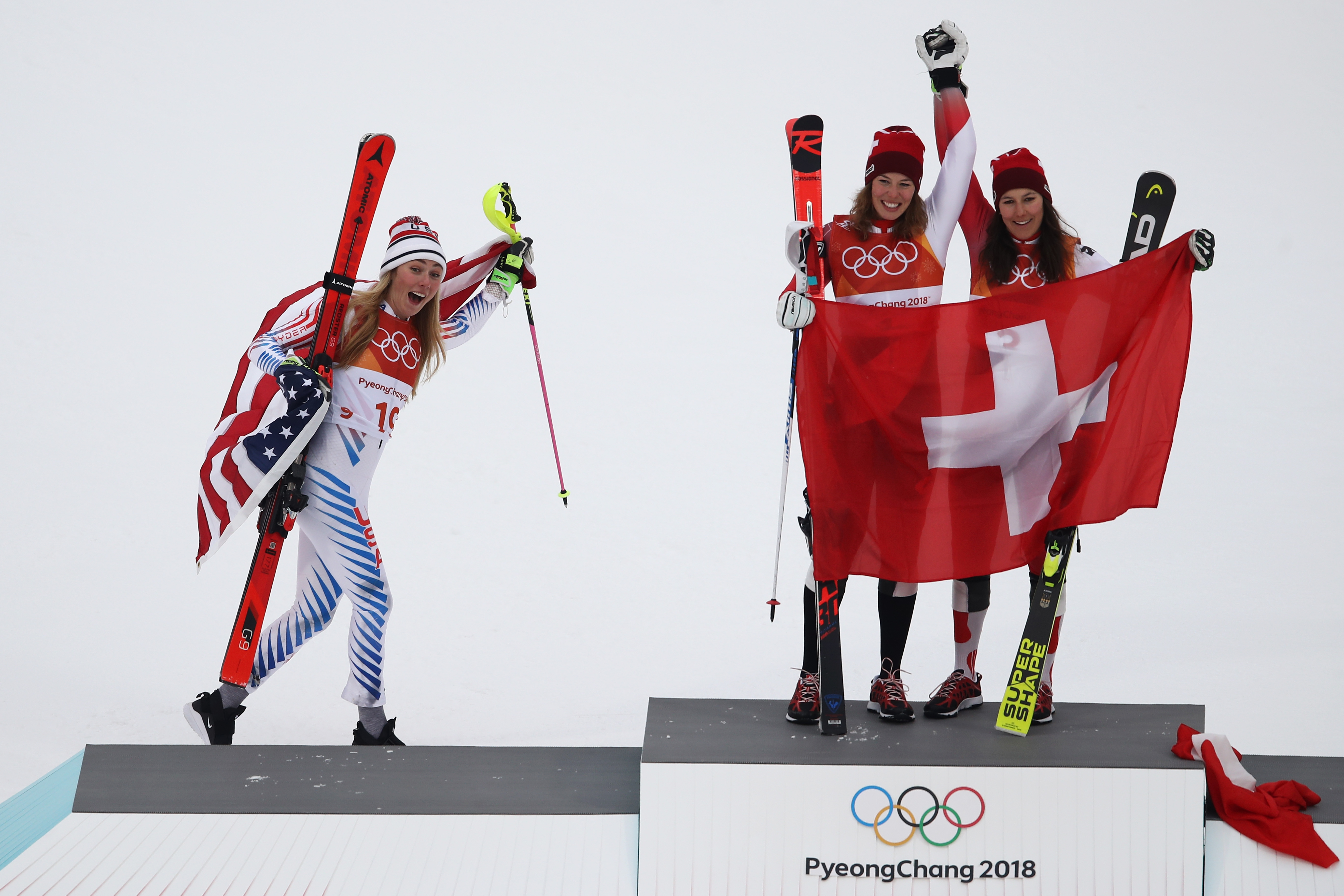
What's the most memorable day you've spent on an Olympic mountain?
It was probably a snow day, like I was telling you about, in Torino (in 2006). They had canceled all the Alpine events for the day. I had never skied in the Italian Alps before or anywhere in Europe. They closed the mountain because it's the Olympics, so no tourists could get on these mountains.
I remember going up there with a couple of other Getty photographers. There's a foot of powder everywhere. Media or officials who were skiing, you could hear their calls of joy as they whooshed down the mountain.
When we got up there one time, two police officers called us over. I was like, 'Uh oh. They're going to tell us we can't be on the mountain.' But they were like, 'Can you take our picture?' They just wanted a happy snap.
Nick Faris is a features writer at theScore.